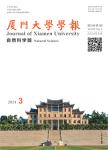Organelle Structures: Bridging Strategy and Technological Processes
Organelle Structures: Bridging Strategy and Technological Processes作者机构:Section Production Technology and Organisation
出 版 物:《厦门大学学报(自然科学版)》 (Journal of Xiamen University:Natural Science)
年 卷 期:2002年第41卷第S1期
页 面:249-251页
核心收录:
学科分类:120202[管理学-企业管理(含:财务管理、市场营销、人力资源管理)] 12[管理学] 1202[管理学-工商管理]
主 题:link Bridging Strategy and Technological Processes Organelle Structures
摘 要:The shifting requirements as imposed on operations ma nagement require adjusting and tailoring the organisational structure to meet ma rket demands. However, translating these requirements directly into hierarchical structure will not ensure the integration of processes across organisational un its and guarantee desirable performance. Therefore, management and management li terature wonders: · How should we connect processes to the external environment within a strategi c framework · Which organisational structures do meet performance requirements · Which choices and freedom do we have within organisational structures · How and when do we implement organisational structures That the hierarchical structure does not meet as such the performance requiremen ts nor did it relate to these became already clear during case studies performed in the ’70s. The conclusion was drawn that organisational changes should affect working processes before they proof to be viable. This required the development of new approach through empirical studies and base d on literature. This led to the development of the organelle structure. The org anelle structure should connect to the strategy and the product flow. Thereto, a decision model has been developed for revealing these relations and the practic al implication. During a number of case studies this methodology has been refined and includes t he strategic choice between variants for the organelle structure with their own performance capabilities; we distinguish about 20 variants ranging between the f unctional organisation and the product flow organisation. These ranges of choice s however can be connected to different order entry points, stemming from logist ic concepts. This extends the performance to improved lead-times and improved c ontrol. Strategic choices relate the organelle structure to external performance criteria dictated by product/market-combinations: · lead-time · quality · costs and internal choices for performance crit



